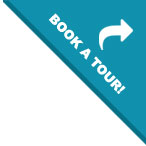


Follow this link to watch Jackie Albarella's presentation on YouTube.
The Theodore Roosevelt Inaugural Site was thrilled to welcome Jackie Albarella as the presenter for our September edition of the 2019 Speaker Nite Series. Albarella is an award-winning documentary filmmaker, artist and author. Her presentation Presidential Photographers explores the widely seen, but rarely spoken, history behind iconic images of our nation’s leaders. From our country’s greatest triumphs to its worst disasters a chain of incredible artists have been there to capture and document these events. These lucky individuals had the opportunity to dive into the rarely-seen world of our nation’s leader and share it with us and generations to come.
Presidential photography began in 1843 with a portrait of President John Quincy Adams. In these early days the vast majority of presidential photographs were taken by assigned military photographers or the press. These pre-modern presidential photographs were taken at public events such as speeches, or were scheduled photo shoots. In many ways, this is a result of both technology and the status of the press at the time. This changed with the birth of the modern presidency under Theodore Roosevelt.
The presidency of Theodore Roosevelt served as a nexus of several factors that ushered in the next phase of presidential photography. Technological advancements, a burgeoning press and growing media consumption created a fertile environment to be exploited. The ever-photogenic and charismatic Theodore Roosevelt used this to his advantage with the creation of the “Bully Pulpit”. Photographs became an essential part of this new political maneuver to push his agenda and sell it to the American people. Photographs of the president at events, giving speeches, on trips and glimpses of the First Family were first truly used during his administration and further expanded under his successors in the years to come.
Starting with Theodore Roosevelt, and continuing on through the first half of the twentieth century, photography was integrated into almost every aspect of the presidency. But John F. Kennedy ushered in a true revolution in the history of presidential photography by creating a new staff position, that of White House photographer. Cecil Stoughton was the nation’s first official presidential photographer. The Kennedys and Stoughton established a precedent for future presidential photographers. A former war photographer, Stoughton used his skills and the unbridled access he was given to the first family to take remarkable pictures. The level of access given to him allowed the Kennedys to create a “Cult of Personality” around not just the President, but the First Family. This has been duplicated many times since, with some First Families allowing more access than others. Presidents Johnson, Ford, Obama and the Bush- 's all gave a great deal of access to their photographers; most developed close personal relationships over the course of their time together.
Those close relationships resulted in many iconic presidential photos. Among others, Albarella referenced the unforgettable image of Lyndon Johnson taking the oath of office aboard Air Force One, as well as the photo of Johnson meeting with Martin Luther King. Jr. She also pointed to Photographer David Hume Kennerly’s unrestricted access to the Oval Office during gerald Ford’s presidency, which allowed him to capture relaxed moments like the president at his desk, with his golden retriever at his side. Another photo that exemplifies the close relationship between photographers and their subjects is the one of then-Vice President Geroge H.W. Bush with his family at their home in Kennebunkport, Maine.
Not all presidents had such good relationships with their photographers. President Nixon was the first to limit photographer-s’ access, resulting in more formal photographs (like the one with Elvis) from that era.President Carter eliminated the position altogether during his administration, and President Reagan chose to work with a team of photographer’-s-.
No matter the changes—with presidents, photographers, events, or even photographic technology —some aspects have been consistent over time and will continue into the future. Photos of presidential dogs, meetings with celebrities and celebrations will be a mainstay for generations to come. No matter the events, good or bad, our presidents will be there to face them and a photographer will not be too far away to document it for them and us. This is our history and these photographs are ours to explore. Many presidential photographs are in the collection of the Library of Congress and are free to use and search. So please use this remarkable resource to familiarize yourself with our presidents and history.
--Travis Ratka, Programming Assistant | Interpreter
*****
Speaker Nite is part of the TR Site’s regular Tuesday evening programming, which is made possible with generous support from M&T Bank, as well as the New York State Council on the Arts (NYSCA), with the support of Governor Andrew Cuomo and the New York State Legislature.

The Theodore Roosevelt Inaugural National Historic Site is operated by the Theodore Roosevelt Inaugural Site Foundation, a registered non-profit organization, through a cooperative agreement with the National Park Service.
© 2026 | All Rights Reserved
641 Delaware Avenue, Buffalo, NY 14202 • (716) 884-0095
Website by Luminus
